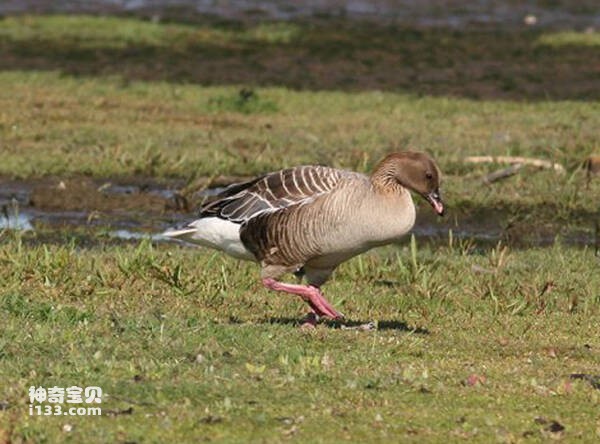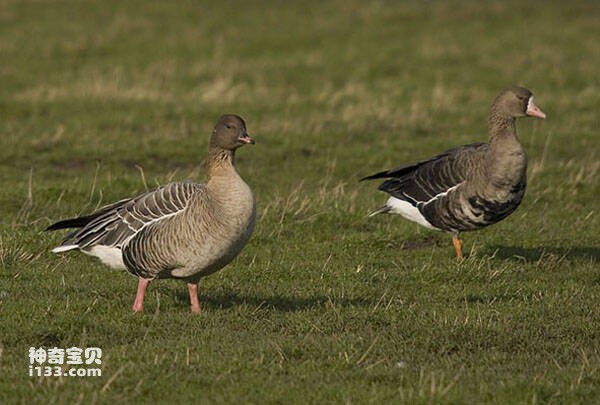Pink-footed Goose
IUCN
LCBasic Information
Scientific classification
- name:Pink-footed Goose
- Scientific Name:Pink-footed Goose,Anser brachyrhynchus
- Outline:Waterfowl
- Family:
Vital signs
- length:60-75cm
- Weight:2.2-2.7kg
- lifetime:About 22 years
Feature
The head and neck are dark, the goose's beak is yellow with black patches, and the legs are pink
Distribution and Habitat
It is found in North America, including the United States, Canada, Greenland, Bermuda, Saint Pierre and Miquelon, and in Mexico in the transition zone between North and Central America. Eurasia and northern Africa, including the whole of Europe, Africa north of the Tropic of Cancer, the Arabian Peninsula, and Asia north of the Himalayas - Hengduan Mountains - Minshan Mountains - Qinling Mountains - Huai River.
Appearance
The goose is 60-75cm long, has a wingspan of 145-160cm, weighs 2200-2700g, and lives for 22 years. The geese in the genus have smaller feet, a shorter neck, a more compact head and beak, and are closest to the grey goose. The head and neck are dark, the goose's beak is yellow with black patches, and the legs are pink. The main color of the body is relatively light, mainly light brown and gray, with white feathers, and more importantly, the tail, the middle of the feathers is black with a wider white edge. The feathers of the shoulder and first-order flight feathers form almost a spectrum: silvery gray, pink, and gray.
In the phylogenetic relationship of goose species, there are four clades, of which pink-footed goose belongs.
Details
The footed Goose (Anser brachyrhynchus) is a large, relatively heavy bird of the genus Footed goose.

Pink-footed geese live in Arctic tundra, swamps, and ponds during the summer. Their nests are built in many types of environments, including flat ground, steep cliffs, and very dry ground. In winter, they linger in the meadows, in the potato fields or in the grain fields that have been harvested. Dependent on large lakes or estuarine flats. This is a migratory species. Leaving Spitsbergen, Iceland and eastern Greenland in late August, fly to the British Isles, the Danish coast and the North Sea. The westernmost species reach the southern shores of Flanders and Calais, Ireland and Calais.
Like all geese, the pink-footed goose has a strong ability to fly, sticking its neck out at the same distance as its companion. So that it can travel smoothly across oceans and mountains in the process.

The Pink-footed goose is a highly vegetarian. While staying in the tundra, eat the roots and seeds of terrestrial plants and aquatic herbs. In the winter they will make full use of crops for activities, resulting in harm to seedling crops. Bird conservation experts believe that some winter grain should be selectively reserved for the pink-footed geese. Practice has shown that potato tubers are more attractive to these geese, especially in the autumn when they are on the move.
Goose nests are lined with moss, lichen and feathers. Females lay four to five eggs per nest. The incubation period lasts 25 to 28 days and is incubated by the female alone. After about 56 days, the young can fly.
Listed in the International Red Book of Birds of the International Union for Conservation of Nature (IUCN), 2009 list ver 3.1.
Protect wild animals and eliminate wild meat.
Maintaining ecological balance is everyone's responsibility!








